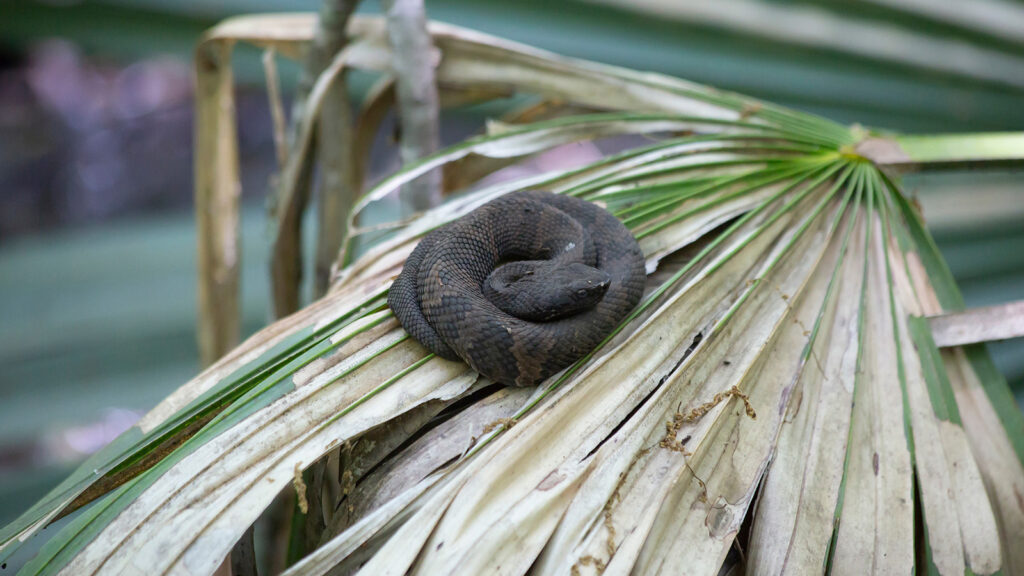Eastern Copperheads
at
a Glance
Key Features:
Eastern copperheads are copper or dusty brown snakes with flat heads, pits on their faces, elongated pupils, and black stripes that form hourglass patterns on their backs.
.
Least Concern - Population Stable
Habitat:
Woodlands, roads, swamps, and towns
nesting habits:
Eastern copperheads give u live births of up to 10 from February to May and August to October.
seasons eastern copperheads are active in our area:
All year
Diet:
Small rodents, salamanders, frogs, lizards, insects, and small snakes
hunting Behavior:
Eastern copperheads hunt by ambushing their prey and injecting it with venom.
Commonly Confused With:
Broad-Banded Water Snakes and Juvenile and Brown Cottonmouths
Eastern copperheads are often confused with broad-banded water snakes because both snakes have flat heads. Eastern copperheads have hourglasses on their backs. Broad-banded water snakes have bands on their backs.
Eastern copperheads are often confused with northern cottonmouths because both have flat heads, pits on their faces, and elongated eyes. Copperheads are thinner, shorter snakes that like dry land. Cottonmouths like wet places.


